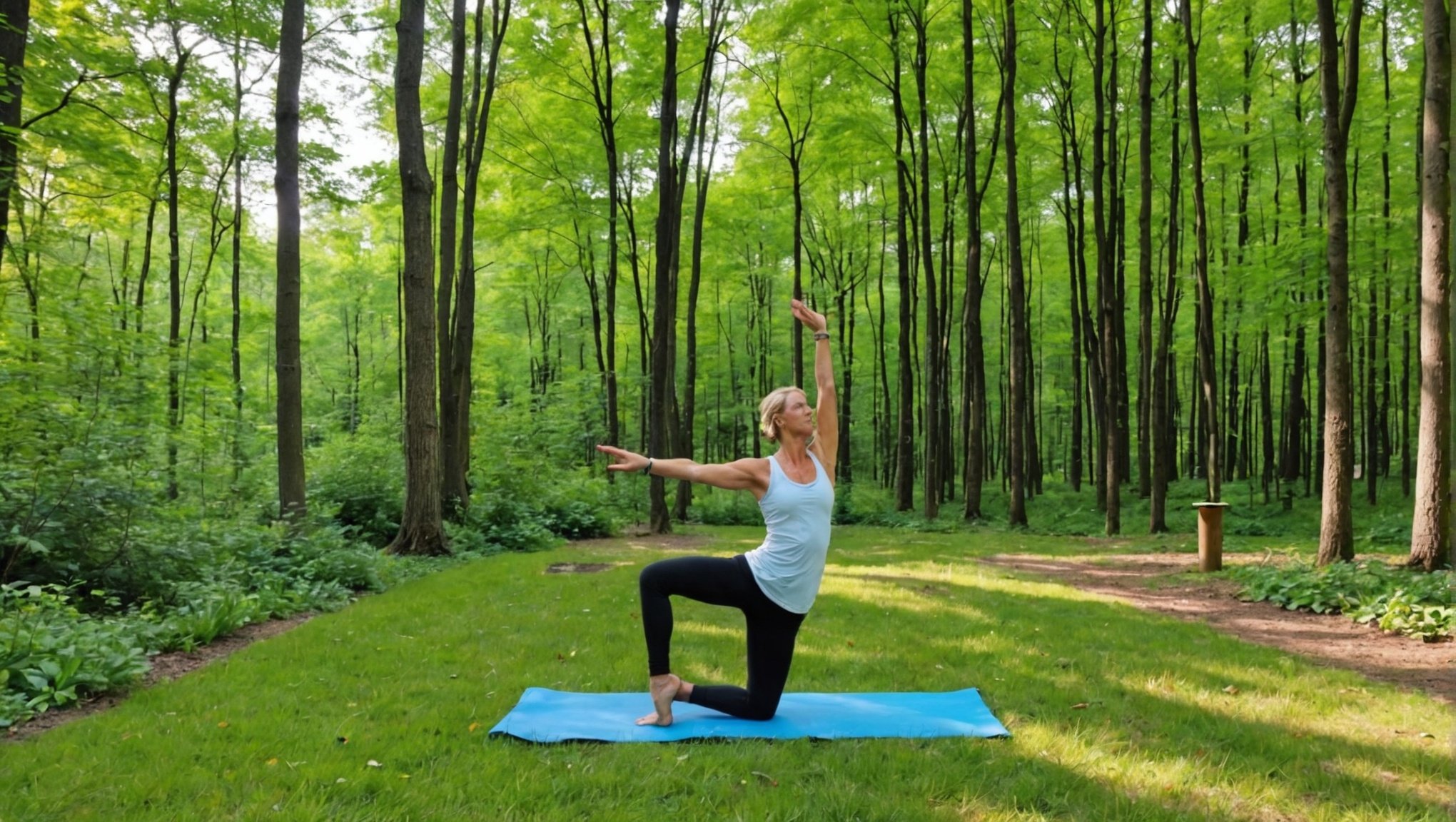Selecting the Ideal Location for Your Outdoor Yoga Retreat
Choosing the perfect location for an outdoor yoga retreat hinges on several key factors to maximise participant experience. Understanding these elements ensures a harmonious balance between accessibility, capacity, and natural surroundings.
Consider accessibility when selecting a venue. It’s vital that participants can easily reach the site, whether through public transport or convenient road networks. This minimizes stress and encourages attendance.
Also to discover : Creating an Intuitive Smart Home System for Seniors: A Guide to Seamless Integration
Capacity is equally important. Evaluate the number of attendees to ensure the space comfortably accommodates everyone while allowing for personal breathing room. A retreat should feel spacious yet intimate, fostering connection without overcrowding.
The environment plays a crucial role. Seek out venues synonymous with serene environments, such as beaches, forests, or gardens, each offering unique vibes:
This might interest you : Discover Sustainable Strategies for Eco-Friendly Mosquito Management in Your Garden
- Beaches provide calming waves and sandy landscapes.
- Forests envelop with gentle breezes and lush greenery.
- Gardens burst with colour and fragrance, inspiring tranquillity.
Site visits are essential. Walk the grounds, visualising yoga in these settings. Assess practical aspects: terrain stability, potential hazards, and proximity to amenities. This ensures the chosen location supports a safe, enriching experience.
Perfect location, perfected retreat.
Enhancing Aesthetics: Creating a Beautiful Environment
Crafting a visually appealing environment is crucial for enriching the yoga experience. Retreat aesthetics can significantly influence the meditative and reflective nature of yoga sessions, allowing practitioners to connect profoundly with their surroundings. By integrating nature into the space, individuals can create a soothing ambiance that promotes relaxation and tranquility.
Consider incorporating natural elements such as stones and fresh flowers into the decor. These components, alongside simple yet elegant fabrics, can transform a typical room into a serene haven. Stones and flowers not only enhance visual appeal but also symbolize grounding and growth, resonating well with the principles of yoga.
Lighting and sound play a pivotal role in atmosphere creation. Soft, warm lighting can mimic the calming effects of a sunset, setting the tone for introspective practice. Additionally, gentle, nature-inspired sounds—such as a trickling stream or birdsong—can foster a peaceful ambiance. These techniques facilitate an immersive retreat atmosphere that encourages mindfulness and meditation.
Ultimately, balance in decor and ambiance is essential. Strive to create a space that not only looks beautiful but feels comfortable and inviting, supporting the holistic benefits of yoga practice. Creating such an environment boosts both the physical and emotional aspects of the yoga journey.
Suggested Yoga Styles for Outdoor Settings
Practicing yoga outdoors offers a refreshing change by connecting with nature, and selecting suitable styles enhances this experience. Hatha yoga is often recommended for beginners due to its gentle pace, focusing on basic poses and breathing. This style is perfect for those new to outdoor yoga, as it provides a calming introduction to aligning movements with natural surroundings.
Vinyasa yoga, another popular outdoor yoga style, presents a dynamic practice that involves flowing movements and breath synchronisation. It’s especially beneficial in open spaces where practitioners can move freely and appreciate the ambiance. This style encourages a deeper physical engagement, making it suitable for intermediates.
Yin yoga stands out in tranquil settings with its meditative approach, holding poses for extended periods. This practice fosters stillness, providing a wonderful opportunity to listen to nature’s whispers while promoting deep mindfulness.
When transferring these yoga practices outdoors, it’s essential to consider safety and comfort. Ensure the ground is even, use appropriate mats for cushioning, and dress suitably for weather conditions. Meditation sessions can be seamlessly integrated, enhancing relaxation and grounding participants in serene environments.
Essential Equipment for Outdoor Yoga Sessions
When engaging in outdoor yoga sessions, choosing the right equipment is crucial for comfort and effectiveness. A quality yoga mat is indispensable; selecting one that’s durable and has a good grip is vital for uneven outdoor surfaces. For those constantly on the move, a travel-friendly mat which is lightweight and foldable, can make transportation easier without compromising performance.
Yoga props—including blocks, straps, and bolsters—enhance practice by providing support and aiding in deeper stretches. Opt for portable versions made of foam or lightweight cork to avoid excess weight.
Sun exposure can be intense during outdoor sessions. Therefore, sun protection, such as broad-brimmed hats, sunglasses, and a high-SPF sunscreen, should not be overlooked. Portable shade solutions, like pop-up canopies or umbrellas, offer a quick reprieve from direct sunlight, maintaining a cool environment and preventing sunburn.
Finally, protecting and maintaining your gear is essential. After each session, wipe down mats and props with a gentle cleanser to remove sweat and dirt. Store your equipment in a dry bag or case, ensuring longevity while considering outdoor elements.
Incorporating Nature into Your Yoga Experience
To enrich your yoga session, consider integrating immersive nature elements into your routine. Utilizing the outdoors allows for a deeper connection with both your practice and the environment. Begin by selecting natural spots, like a serene forest or sandy beach, for your yoga poses. The tranquility of these settings can enhance mindful practices, allowing you to focus inward while maintaining awareness of your surroundings.
For a profound connection, incorporate nature walks as part of your yoga experience. These walks foster an intimate bond with nature, letting you observe wildlife or engage with the landscape. Sound therapy, using ambient natural sounds such as birds chirping or water flowing, can further deepen this connection. Such sounds serve as a soothing backdrop to your practice, promoting relaxation and mindfulness.
Engagement with the environment can be encouraged through activities like planting trees. This initiative not only benefits the ecosystem but also imparts a sense of fulfillment and responsibility. Another engaging activity is observing wildlife, which enriches your experience by connecting you to nature’s rhythms.
Incorporating these techniques can transform a typical yoga session into a rejuvenating encounter with nature.
Planning Checklists and Successful Retreat Examples
Planning a retreat can be daunting, yet with carefully crafted checklists, it becomes manageable. Begin with a comprehensive list to track logistics, scheduling, and marketing efforts. For logistics, consider accommodations, venue setup, transportation, and meals. Scheduling is crucial—plan sessions and breaks thoroughly, ensuring a smooth flow of activities.
Marketing efforts must not be underestimated. Craft targeted campaigns and leverage social media to boost visibility. Successful retreat examples demonstrate how thoughtful planning leads to seamless experiences. A standout case is an outdoor yoga retreat held in the Rocky Mountains, where synchronization of diverse activities engendered a tranquil atmosphere for participants.
Case studies offer invaluable insights, highlighting lessons learned and best practices. Comb through feedback for continuous improvement. One anecdote reveals the transformative power of incorporating local culture into program activities—thus enriching the retreat experience.
To synthesise these insights into action, employ strategic planning checklists that evolve with each event. Recognise the value of adaptability and the significance of tapping into past successes. As depicted in successful retreats, a proactive approach to forethought is pivotal in crafting memorable and impactful gatherings.
















